Deluxe Analog 2 Tape Edition
For some time now, NativeDSD.com has been offering Analog Reel-to-Reel Tapes from 2xHD Mastering. Native DSD Music also sells a number of Original Recordings and Analog Tape to DSD transfers from 2xHD.
2xHD is proud to offer this deluxe double reel tape version of one of the most famous audiophile cult recordings. Jazz at the Pawnshop is widely regarded as a reference recording, one of the most natural-sounding live jazz reproductions of all time.
The package includes two audiophile SM900 tapes recorded at 15 ips in CCIR (also available in NAB), on two balanced metal reels manufactured in Germany by Feinwerktechnik allgäu GmbH and an elegant booklet.
This is a historically significant album.
2xHD Technical Information
The magnetic tape used for this product is the finest state-of-the-art on the market today. Buying an audio tape from 2xHD guarantees that ultimate quality is preserved from the original master in contrast to vinyl albums, CDs or other formats which are all generated from multiple generations of the original eg: tapes have been duplicated (made into ‘safety Copies’) from the master to be sent to mastering labs around the world from which more generations or conversions of the original are used for manufacturing and reproducing. At 2xHD we always use the original master tape for the transfer to your tape.
All transfer pollution which may be caused by cabling, audio consoles, electrical interference, and amplifiers, are eliminated in the 2xHD chain as we dig into the original recording, using more sophisticated power supplies, cables, etc. These procedures help lower tape noise at the lowest spectrum and bring out the second harmonics warmth associated with analog recordings, creating a fresh, new, yet authentic version of the original recording. We call the procedure ‘back to the future technology’. So, it’s fair to say that you own a recording that is superior to the original released product.
The transfer is made to the best magnetic tape on the market today, the SM900 Studio Master tape which has all the features of a master tape but is also designed for long storage. The formula was created by AGFA around 1973. This tape has the best Print-through protection and longest storage life. Tapes of this formula have been stored for more than 40 years — and display no deterioration of the coating or sound quality. It is often chosen by professionals who specialize in classical, instrumental or voice recordings due to the “transparent” sound of its formula.
Fusion Pure Analog Tape by 2xHD
Audio tapes from 2xHD guarantees that ultimate quality is preserved from the original master in contrast to vinyl albums, or CDs.
For the recording on this tape, the original 1/4″ 15 ips NAB or CCIR master tapes were played on a Nagra-T tape recorder, modified with high-end tube playback electronics, wired with OCC silver cables from the playback head direct to a Nick Doshi tube head preamplifier. The Nagra-T, with its four direct drive motors, two pinch rollers and a tape tension head, is one of the best transports ever made. A customer-built carbon fiber head block and a head damping electronic system permit 2HD Fusion to obtain more transparency and better 3D imaging. Your copy was recorded on a Nagra iV-S 1/4″ at 15 ips.
A World of Music on Reel Tape at Your Fingertips
Nothing sounds better than music on audio reel to reel tape. The return of the most delicate, but most considered, kind of audio format for a true audiophiles. The most dubious audiophiles know the truth about reel-to-reel tape. The truth is that it just sounds better than vinyl. The ultimate reel to reel tape is the latest retro-trend for audiophiles, it has a greater dynamic range than vinyl, capable of producing extraordinary sound for the treble and bass and there is less signal processing which is the enemy of a hi-fi extraordinaire.
The 2xHD team proud to announce the receipt of two prestigious 2020 Awards: THE POSITIVE FEEDBACK 2020 PRODUCT OF THE YEAR AWARD was given for Audiophile Analog Collection Vol 2 for Release on Reel Master Tape and HIGH FIDELITY’s BEST RECORDING 2020 Award was bestowed on 2xHD for two pure analog recordings: Audiophile Analog Collection Vol 1. and Audiophile Analog Collection Vol 2. Feel The Warmth!
The 2xHD proprietary mastering provides a unique listening experience as the process digs deep in original recordings to bring out all hidden information, without altering the music in any way, uncovering, and bringing out nuances, warmth, depth of field and even the air around the musicians.
Pure analog transfer from the original master tape. Audiotapes from 2xHD guarantees that ultimate quality is preserved from the original master in contrast to LP vinyl, CDs, or other formats. Exceptional Audiophile Analog Sound – Master Quality Reel To Reel Recording On RTM SM900 Tape.
Based in Montreal and created by audiophile sound engineer René Laflamme and producer André Perry. All 2xHD audiotapes are from the original analog master and transfer in analog domain using a Nagra-T tape recorder, modified with high-end tube playback electronics, wired from the playback head. In the high-end audio world, René has carved out a reputation for the definition of excellence and uses his knowledge and unfailing instinct to match various audio components to create the best all-encompassing sound experience. The company plans to release a new title every 2 months.
Audiophile quality microphone designer and 40 times winner of “Best sound in the show” at high-end audio equipment conventions, Laflamme uses his knowledge and unfailing instinct to match various audio components to create the best all-encompassing sound experience. The exclusive 2xHD system is the fruit of Laflamme’s total experience and imagination. Music on reel-to-reel tape from the original analogue master.
Caring for Your Tape
- We use an MRL tape for alignment of our tape decks
- Tapes should always be stored ‘tail-out’ to prevent print-through
- Store in a dry place. The ideal environment is between 154C-26″C (59’F-78’F) and Relative Humidity of 45%-70%.
- Keep away from any magnetic field such as speakers
- Clean & demagnetize the heads regularly
- These simple procedures will help you enjoy the music for many years. Happy Listening! Tape tail out! Before playback, please rewind the tape
- NativeDSD nor 2xHD cannot be responsible for any damage resulting from customer tape handling or defective machine
Compatible Tape Recorders
Below is a partial list of compatible tape recorders. Other tape recorders may be used as long as they have 15ips, 2 track playback capability, CCIR or NAB curve and 10” diameter reel capacity.
3M, Akai, Ampex 350, 351, 354, 440, MR70, ATR 100, 102, Ballfinger M063H1, M063H3, M063H5, M063H1IX, Crown, Denon, Fostex, Lyrec, Magnecord, Marantz, MCI, Mitsubishi, Nagra T, Nagra IV-S/QGB, Otari, Philips PRO35, PRO36, Pioneer RT707, Scully280, Shure, Sony, Stellavox, Studer B67, C37, A80, 810, A820, ReVox A77, C260, G36, PR99, Tandberg, Teac X2000, Tascam, Technics RS1500, Telefunken M5, M10, M12, M15, Thorens TM1600, United home audio and more.
Additional information
| Label | |
|---|---|
| SKU | 2XHDNS-TB1232 |
| Qualities | |
| Artists | Arne Domnerus, Bengt Hallberg, Egil Johansen, Georg Riedel, Lars Erstrand |
| Weight | 1,2 kg |
| Dimensions | 37 × 33 × 2 cm |
| Instruments | |
| Release Date | September 27, 2022 |
1 review for Jazz at the Pawnshop (Deluxe 2 Tape Edition)
Only logged in customers who have purchased this product may leave a review.
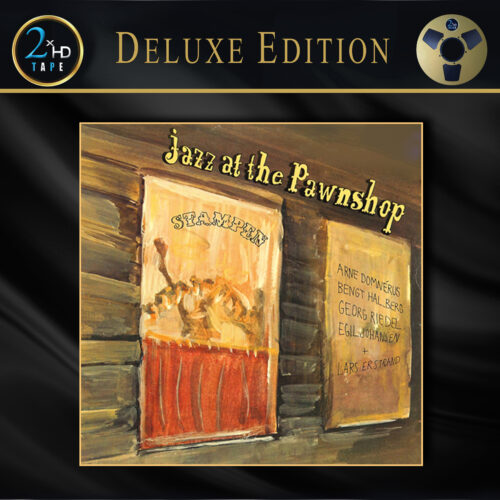
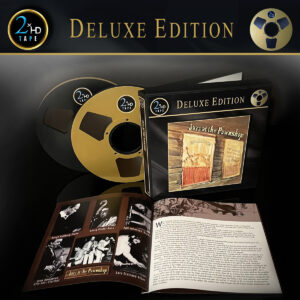
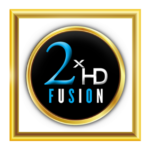
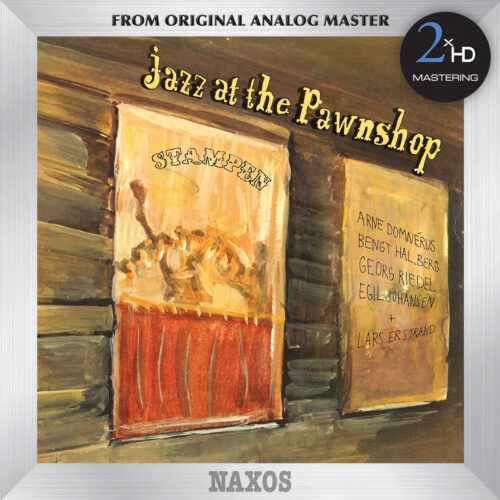
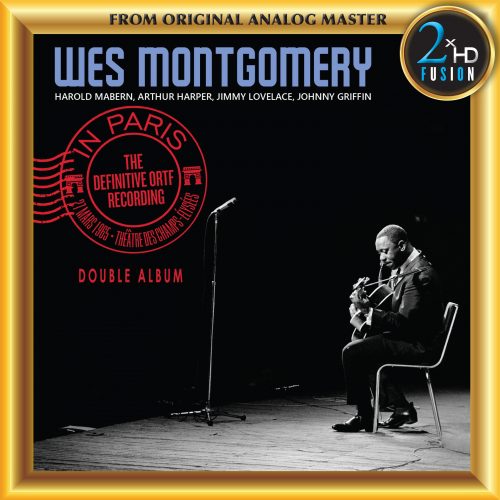

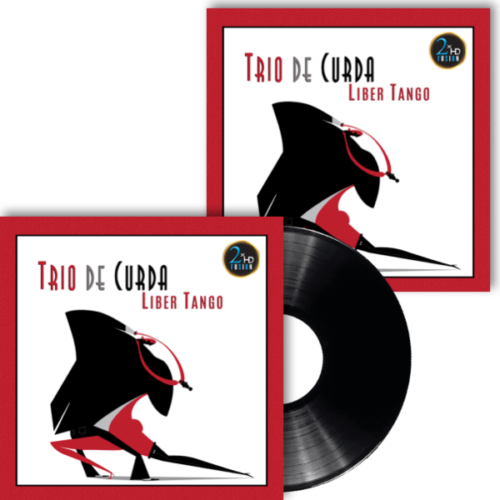
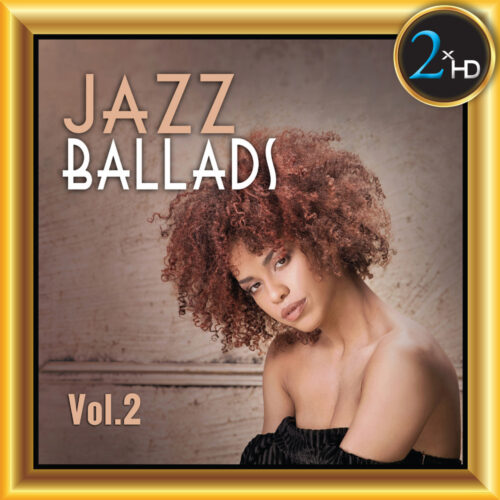
I have lived with a CD version of Jazz at the Pawnshop since the late eighties. I first heard the album in the local HiFi shop then just a few years ago I purchased it as a Native DSD download.
This Reel to Reel version is a real eye opener. Nothing can duplicate the true dynamic impact of what it must have been like to have been at the live venue all those years ago.
Just one thing – the track choice is missing some of my favorites like Barbados and a few others.
Colin Jones (verified owner) –